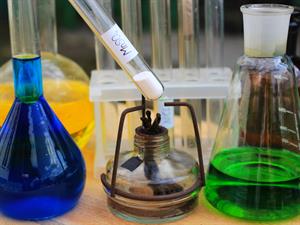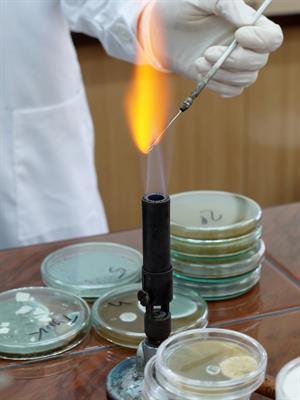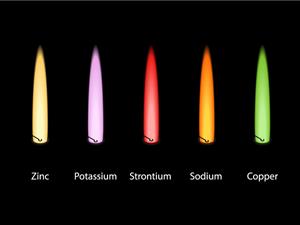
PUMPA - SMART LEARNING
எங்கள் ஆசிரியர்களுடன் 1-ஆன்-1 ஆலோசனை நேரத்தைப் பெறுங்கள். டாப்பர் ஆவதற்கு நாங்கள் பயிற்சி அளிப்போம்
Book Free DemoThere are common tests we use to identify a salt.
- Physical examination of the salt
- Dry heating test
- Flame test
Physical examination: The test involves the colour, smell and density of the salt. This test is not really accurate.
Dry heating test: A small amount of salt is heated in a dry test tube for this test. The dissolved salts settle in the container after all the water has evaporated.

Test for dry heating
Flame test: When certain salts react with concentrated hydrochloric acid (\(HCl\)), their chlorides are formed. With the help of platinum wire, the mixture of concentrated \(HCl\) paste is added to the flame.

Flame test

Inference and colour of the flames
Uses of salts
There are some salts that we use in daily life. They are listed below with their chemical names.
Chemical Name | Chemical formula | |
Common salt | Sodium chloride | \(NaCl\) |
Washing soda | Sodium carbonate | \(Na_2CO_3\) |
Baking soda | Sodium bicarbonate or sodium hydrogen carbonate | \(NaHCO_3\) |
Bleaching powder | Calcium oxychloride | \(CaOCl_2\) |
Plaster of Paris | Calcium sulphate hemihydrate |
Common salt:
- It is a popular food preservative and flavour enhancer in the food industry.
- It is a key ingredient in producing chemicals like sodium carbonate and sodium hydrogen carbonate in the industrial sector.
- It is used in cold countries to prevent the formation of ice on highways, bridges and other surfaces, which is essential for safe driving conditions.
Washing soda:
- It is used in softening hard water.
- It is used in soap, glass and paper industries.
- It is used for removing a wide range of stains such as grease, blood, tea and coffee stains.
- It is used in textile industries to help dyes adhere to the fabric.
- It can be used in bathrooms to remove soap scum and around the house for general cleaning of hard surfaces.
Baking soda:
- It is used to treat stomach upset and indigestion by lowering stomach acidity.
- It is used in the making of baking powder.
- It is used in fire extinguishers (foam extinguishers) along with aluminium sulphate.
- It is used to make cakes and bread, soft and spongy.
- It is used in ear drops, cosmetics and personal care products.
- It acts as a neutraliser for the effect of acid.
Bleaching powder:
- It is used in the laundry industry for bleaching cotton and linen.
- It is used as a disinfectant in the drinking water supply.
- Since it acts as a strong oxidising agent, used in many industries.
Plaster of Paris:
- It is used in the plastering of bones.
- It is used in the production of statue casts.
- It is a component of chalk.
- It is used in the construction of a false ceiling.